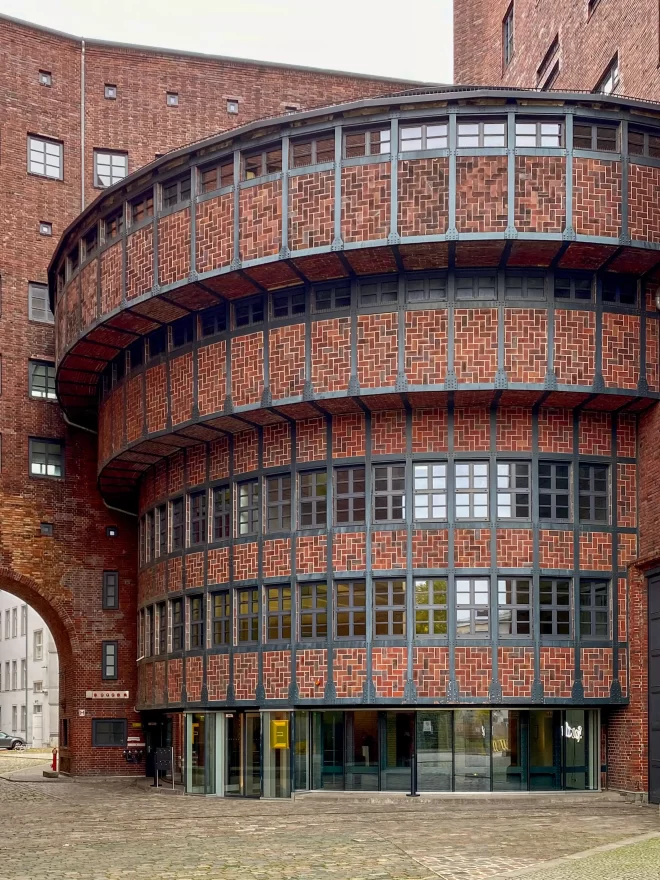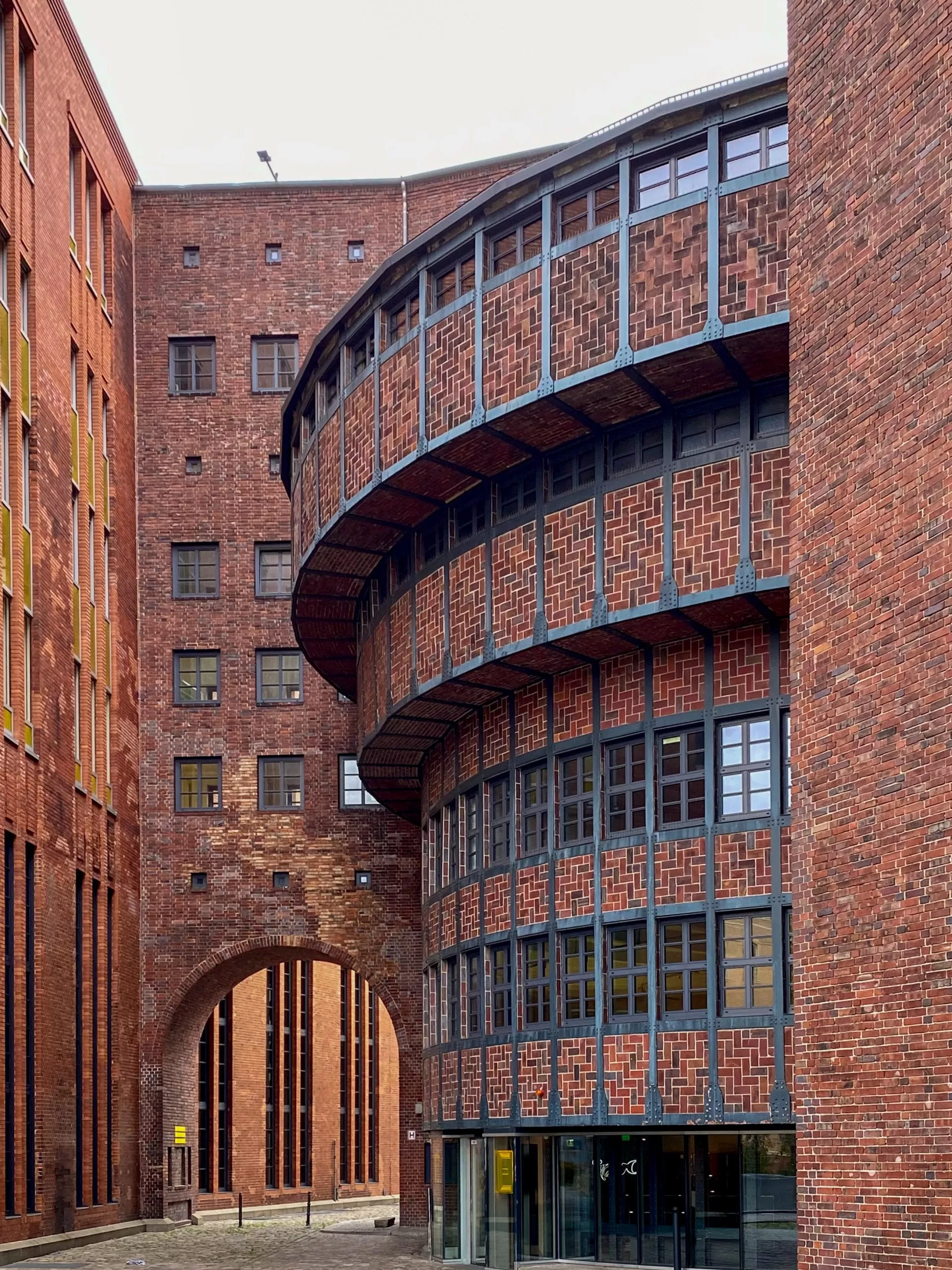
Umspannwerk Buchhändlerhof, 1926-1928. Architects: Hans Heinrich Müller, Felix Thümen. Photo: Daniela Christmann
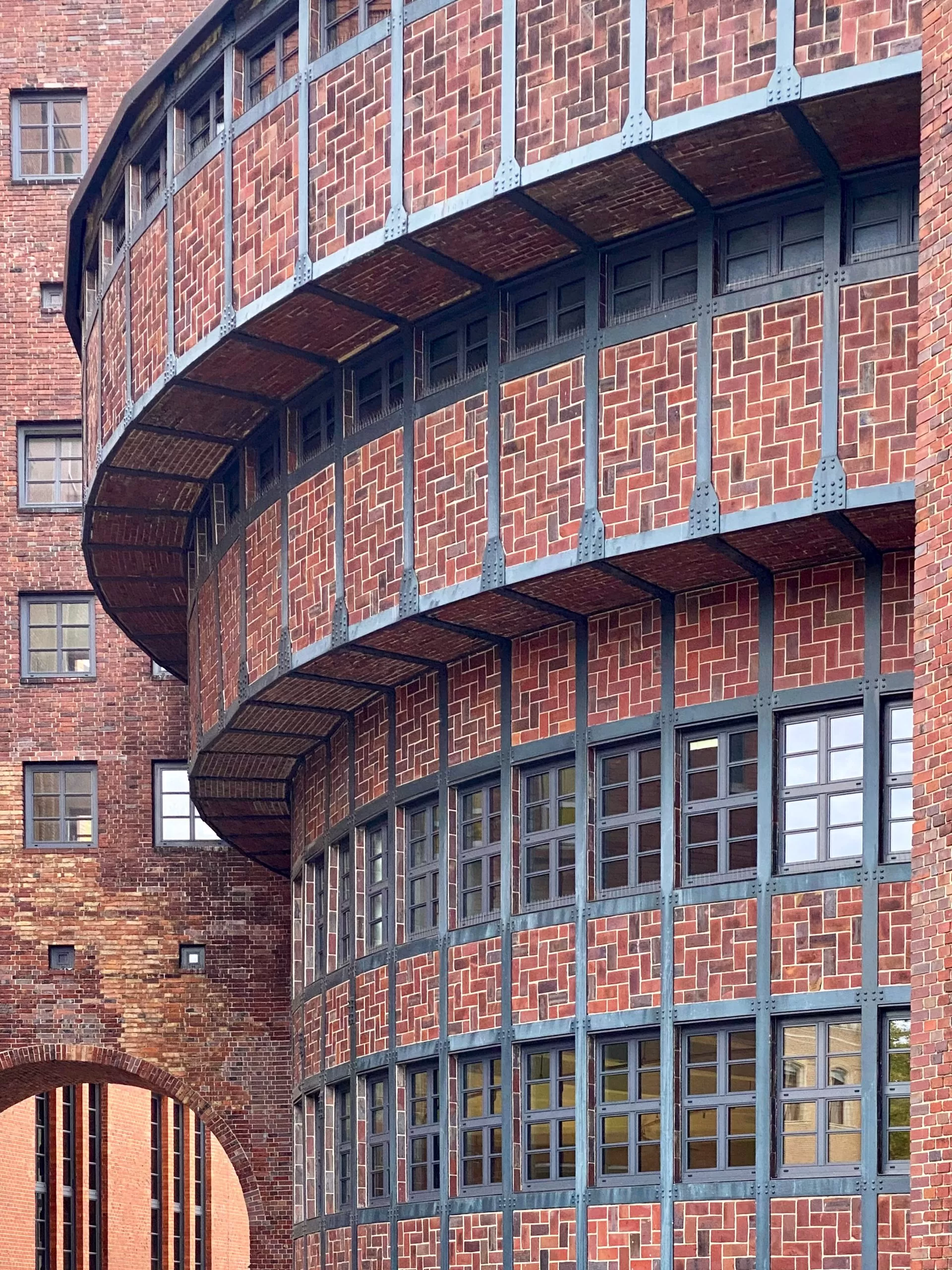
Umspannwerk Buchhändlerhof, 1926-1928. Architects: Hans Heinrich Müller, Felix Thümen. Photo: Daniela Christmann
1926 – 1928
Architects: Hans Heinrich Müller, Felix Thümen
Mauerstraße 78-80, inner courtyard, Berlin-Mitte
The listed transformer station was completed to designs by Hans Heinrich Müller and Felix Thümen on the site of the former Mauerstraße power station, whose buildings were almost completely demolished for the new complex.
Its name Buchhändlerhof referred to the offices of the Corporation of Berlin Booksellers adjoining Wilhelmstraße.
Municipal Electricity Works Berlin
Städtische Elektrizitäts-Werke, Aktiengesellschaft zu Berlin (A.G. StEW) was a subsidiary of Deutsche Edison-Gesellschaft (DEG), which was founded in 1883 and from which AEG emerged in 1887.
A.G. StEW was renamed Berliner Elektrizitäts-Werke (BEW) in 1887. The companies were managed by Emil Rathenau, Oskar von Miller and Felix Deutsch.
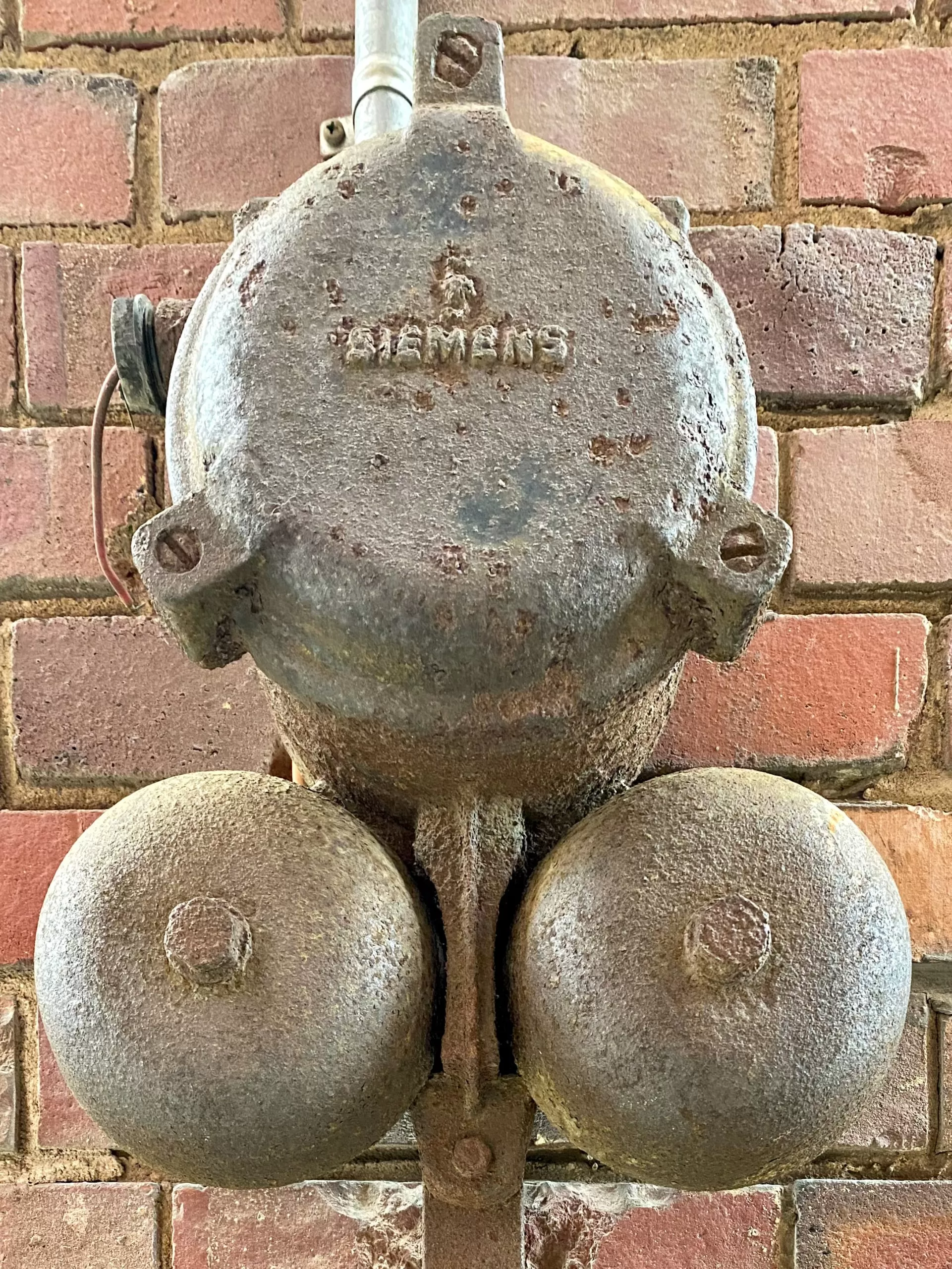
Umspannwerk Buchhändlerhof, 1926-1928. Architects: Hans Heinrich Müller, Felix Thümen. Photo: Daniela Christmann
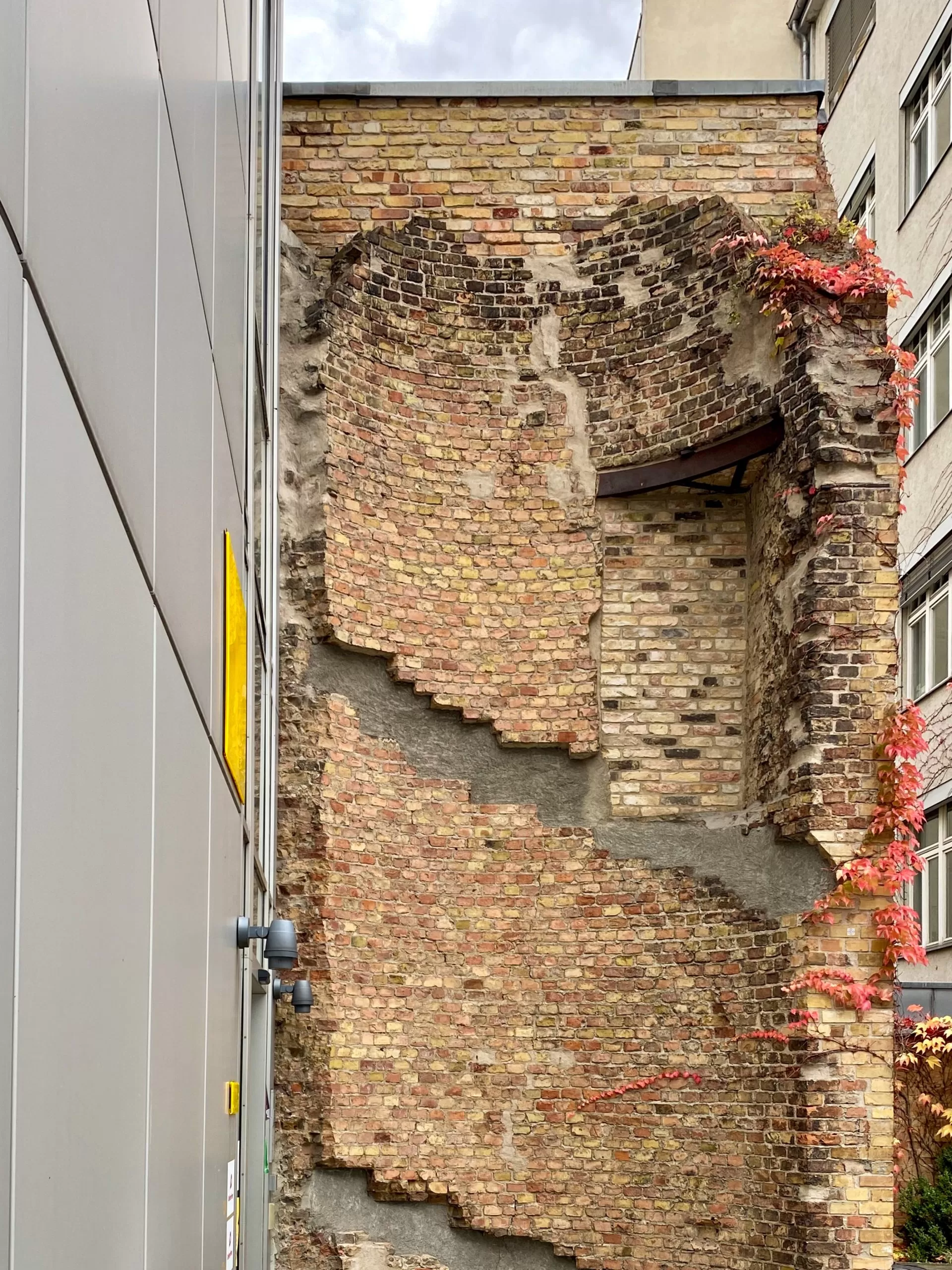
Umspannwerk Buchhändlerhof, 1926-1928. Architects: Hans Heinrich Müller, Felix Thümen. Photo: Daniela Christmann
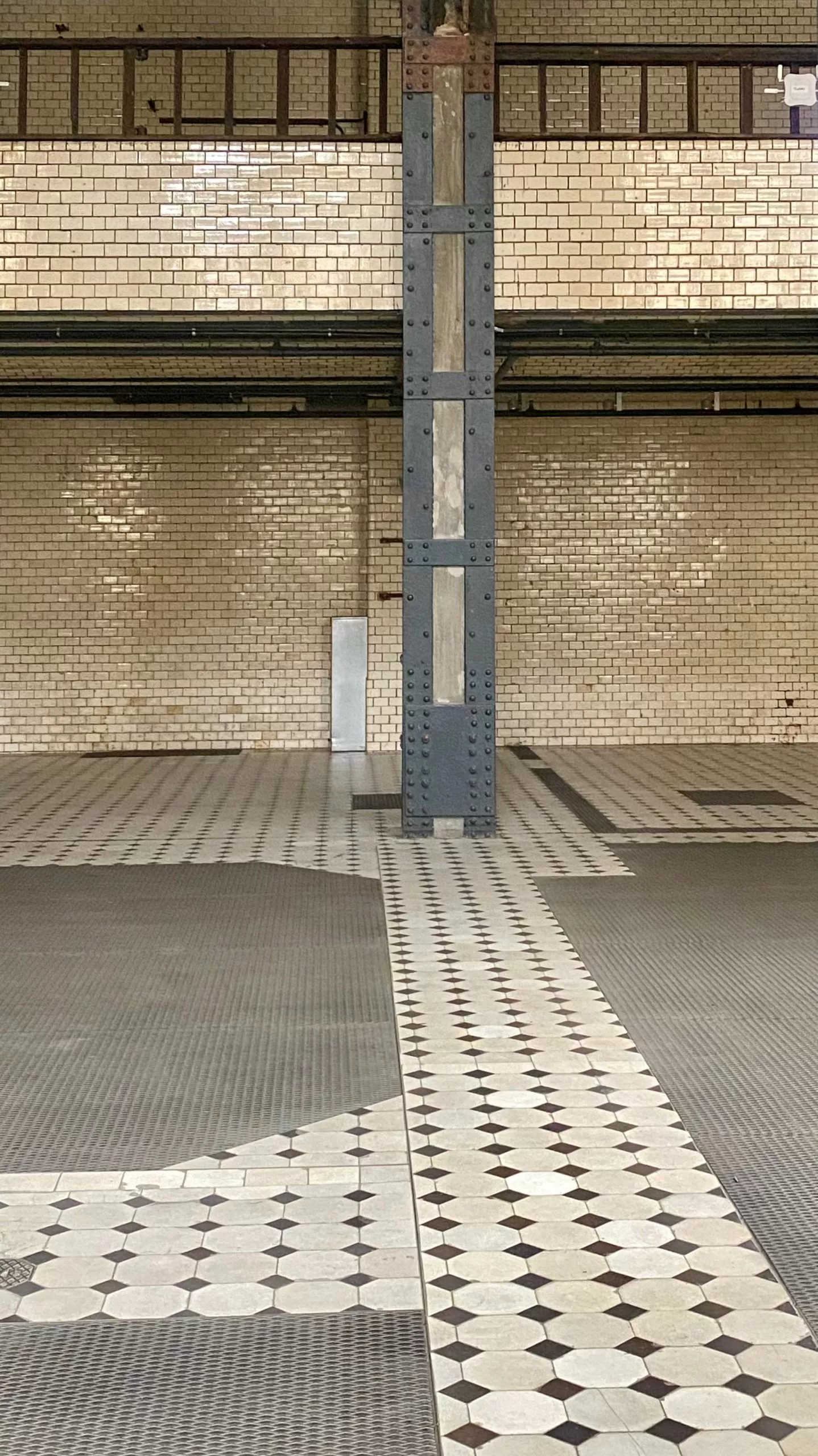
Umspannwerk Buchhändlerhof, 1926-1928. Architects: Hans Heinrich Müller, Felix Thümen. Photo: Daniela Christmann
Berlin Central Power Station
The location of the Buchhändlerhof substation in the inner block area of the apartment buildings at Mauerstraße 78-80 is closely linked to the early development of Berlin’s electricity works:
Between 1885 and 1886, Städtische Elektrizitäts-Werke, Aktiengesellschaft zu Berlin built one of Berlin’s first two central substations on the site to supply the buildings on Leipziger Strasse and Potsdamer Platz.
The northern part of this central station from 1885 still exists today. It was converted in 1893 to house modern steam dynamo machines and is the oldest structural evidence of the electricity industry in Germany.
1926 to 1928
When Hans Heinrich Müller and Felix Thümen rebuilt the switchgear house between 1926 and 1928, the old machine hall was largely retained in its 1893 form.
The new substation was part of the 30 kV cable network that had been built since 1924, which was superimposed on the previous 6 kV supply network and now established the connection between the Berlin power stations and the newly built substations in the city districts.
New Construction
Parts of the old power station buildings were demolished for the new plant, other parts of the building were converted for the operation of a rectifier system and a new nine-storey building was erected for the control room.
A multi-storey building with an archway was used to create a connection between the switchgear house and the old buildings.
The switchgear was stacked on top of each other on nine storeys, grouped around three atriums.
In the angle between the new building and the connecting building, the control room building is designed as a quarter-circular structure with three cantilevered sections.
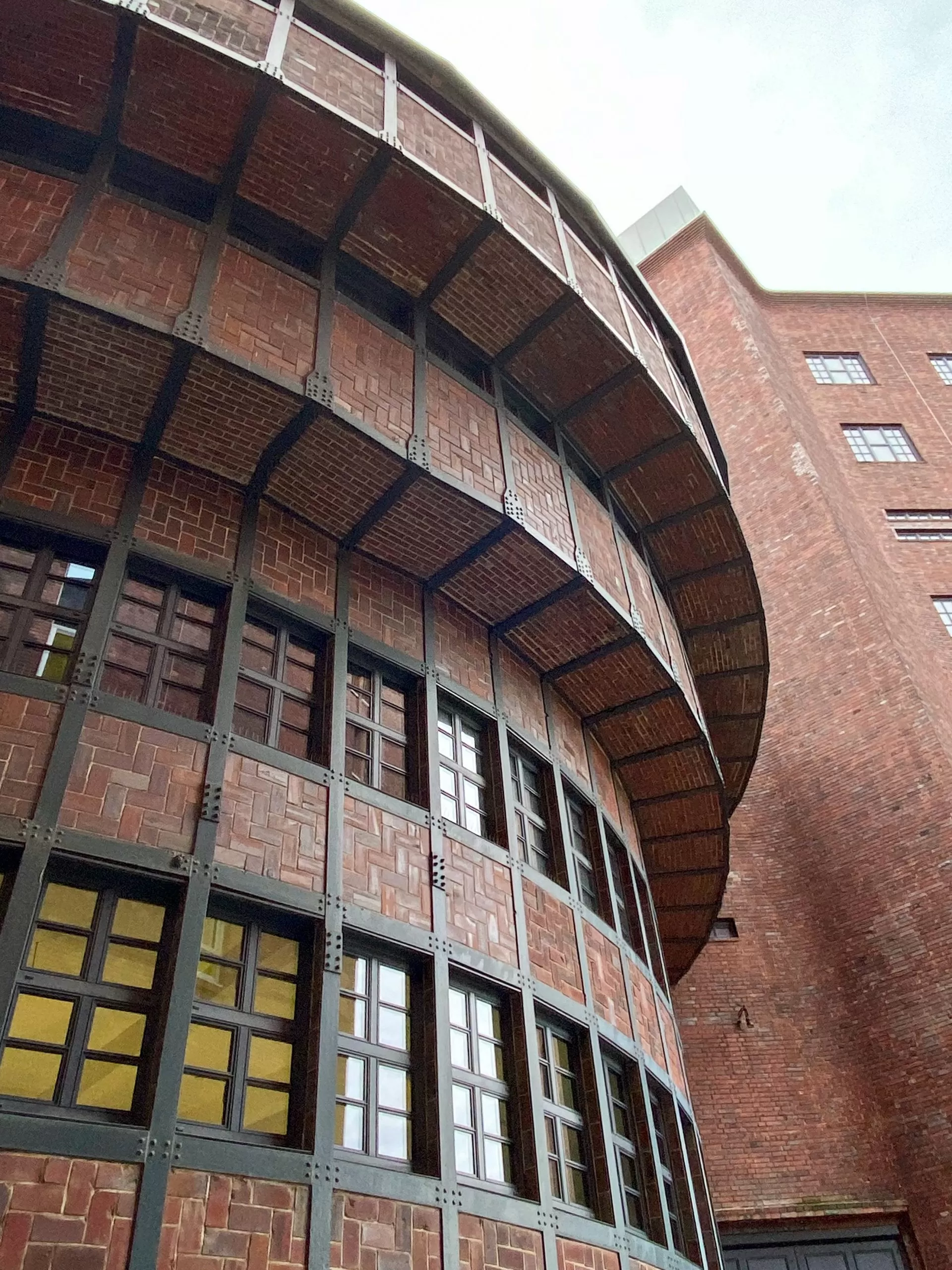
Umspannwerk Buchhändlerhof, 1926-1928. Architects: Hans Heinrich Müller, Felix Thümen. Photo: Daniela Christmann
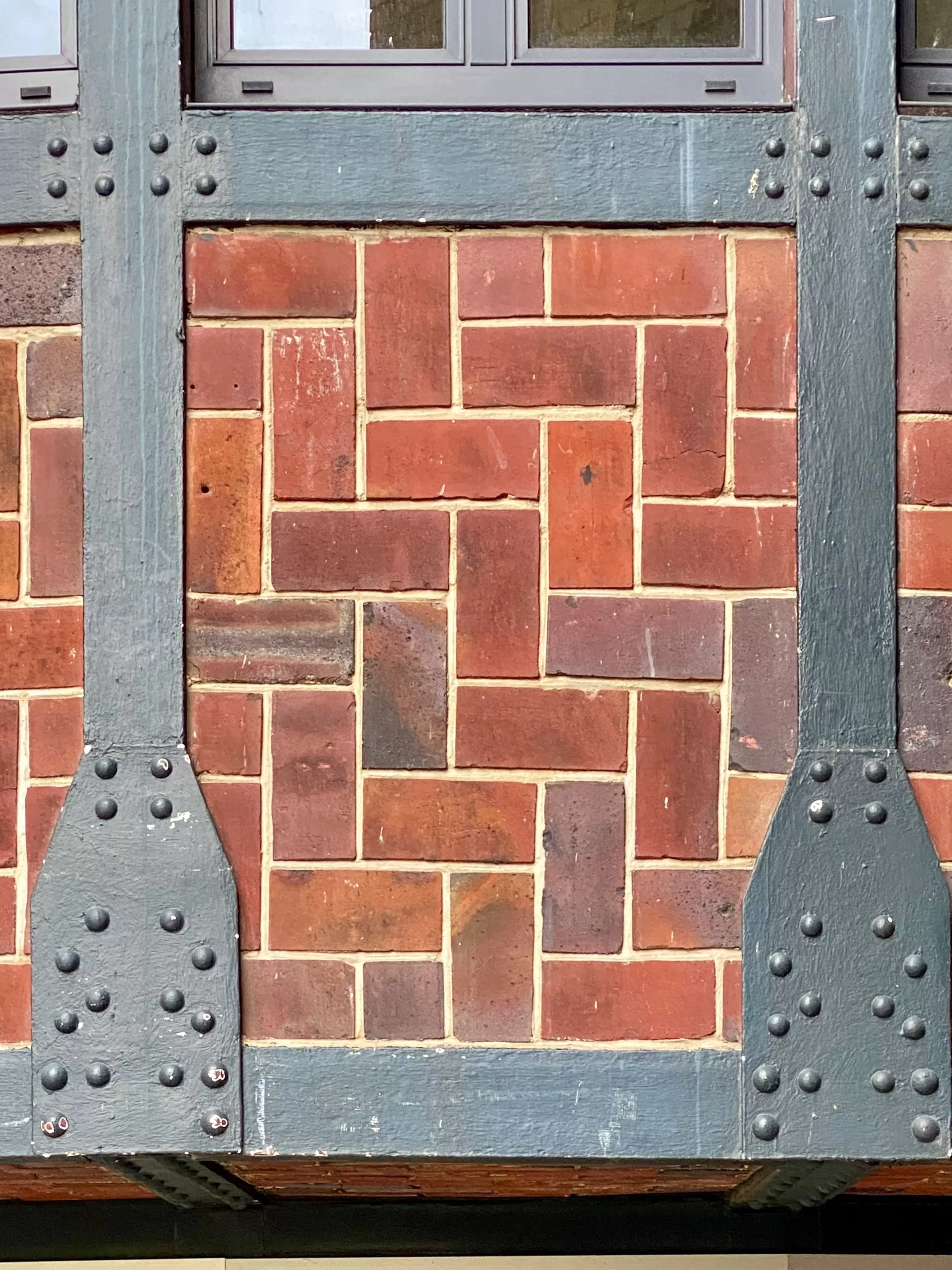
Umspannwerk Buchhändlerhof, 1926-1928. Architects: Hans Heinrich Müller, Felix Thümen. Photo: Daniela Christmann

Umspannwerk Buchhändlerhof, 1926-1928. Architects: Hans Heinrich Müller, Felix Thümen. Photo: Daniela Christmann
Hans Poelzig
The design of the building and the exposed steel construction with a false wall lining (a false wall is a solid self-supporting wall consisting of a construction of horizontal and vertical steel strips stretched side by side on two levels and lined with bricks, facing bricks or concrete slabs) are reminiscent of Hans Poelzig‘s pioneering factory and commercial buildings.
Hans Heinrich Müller and Felix Thümen, who designed several substations in Berlin during these years, developed their own contemporary design language, which emphasized the function of the building and the importance of the power stations for urban and industrial development.
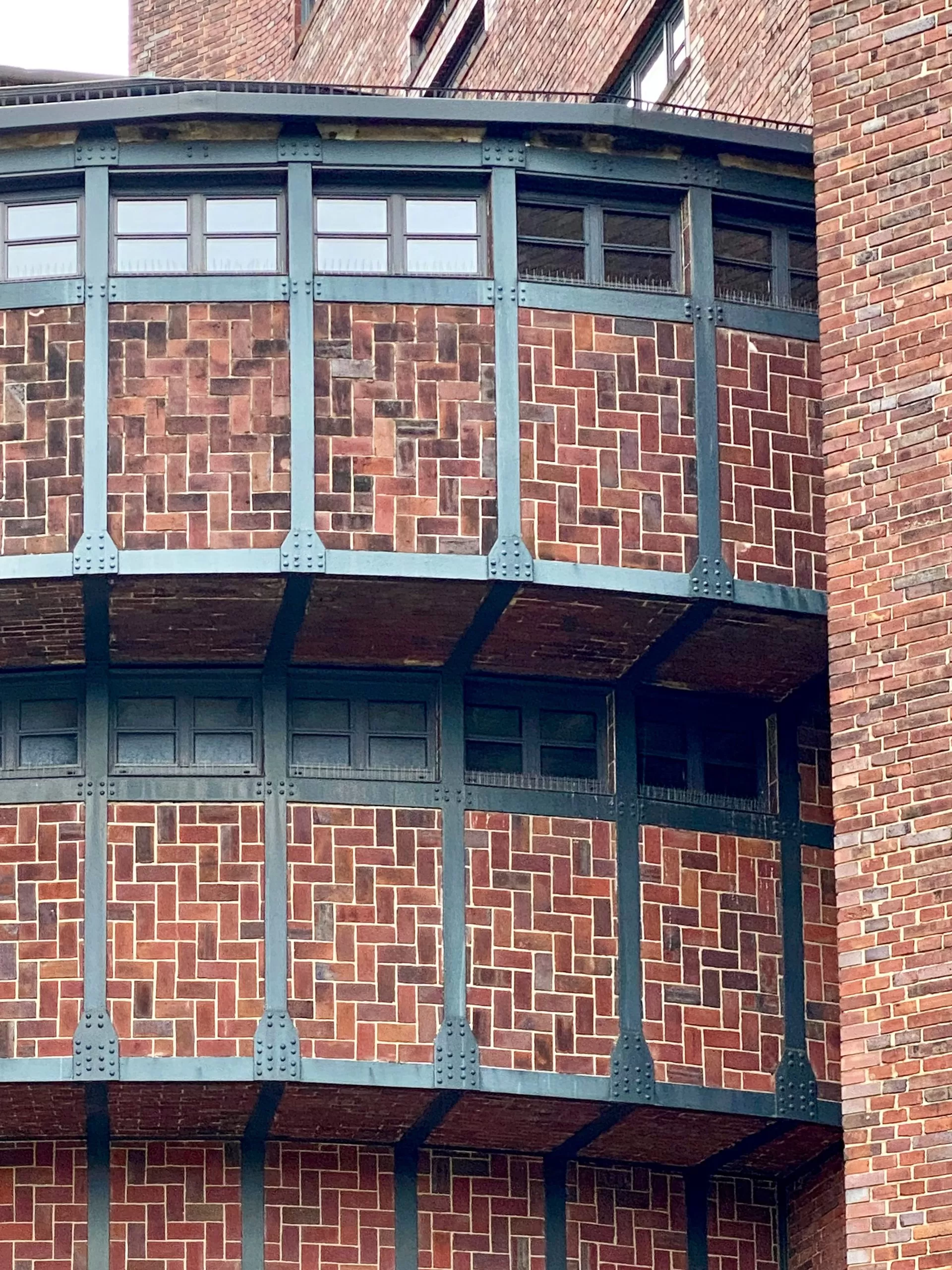
Umspannwerk Buchhändlerhof, 1926-1928. Architects: Hans Heinrich Müller, Felix Thümen. Photo: Daniela Christmann
Post-war Period and Present Use
The entire plant was severely damaged during the Second World War and remained as a partial ruin in the eastern part of Berlin.
In 1988, the remaining operating facilities were decommissioned. Technically gutted, only the control room remained.
In 1993, the E-Werk opened as a techno club.
After the club closed in July 1997, several initiatives for a permanent use failed.
Since 2005, the renovated E-Werk has been an event venue and office building.

